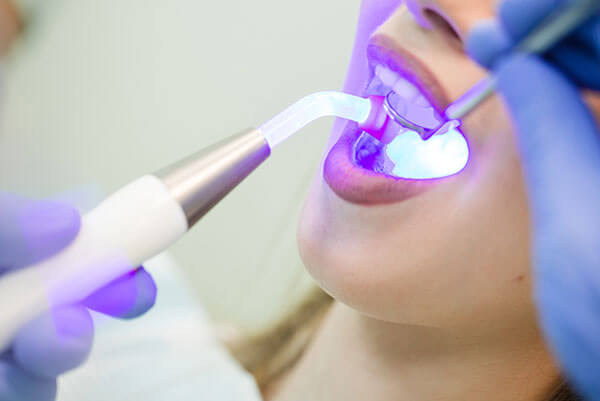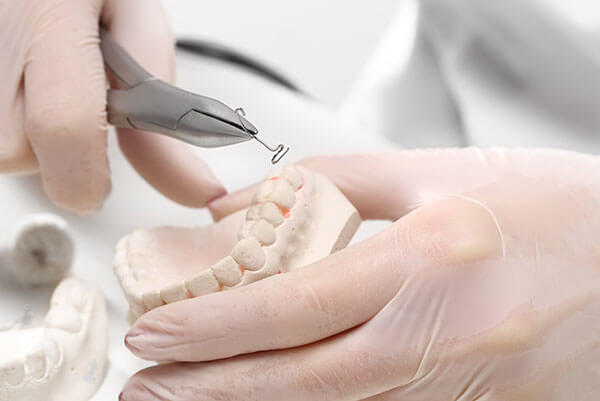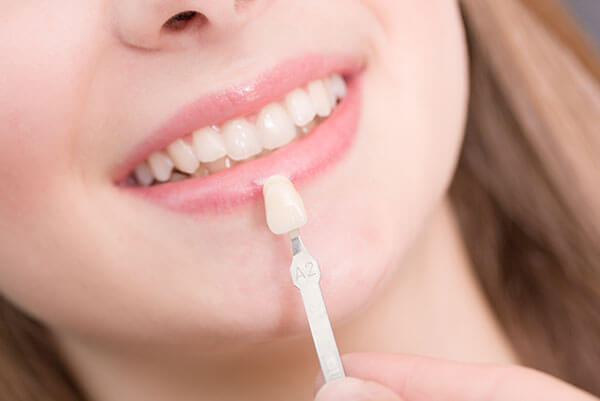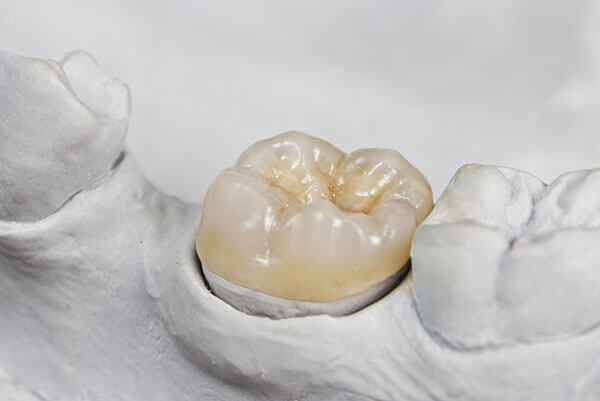The term “restorative dentistry” is the management of oral health problems and restoring of the mouth to a functional and aesthetic state. Basically the aim is to maintain the integrity of the teeth and gums as much as possible. Procedures include fillings, veneers, crowns, bridges, full and partial dentures and dental implants. Our team perform restorative dentistry every day and are committed to delivering gentle treatments with minimal discomfort.
Restoration


Bridge & Denture
A bridge is a custom-made appliance anchored to adjacent teeth to replace one or more missing teeth. Losing a tooth can cause serious problems for the neighbouring teeth. A bridge stabilises the teeth as it is cemented to the natural teeth next to the space left by the missing tooth.
A denture is a removable replacement for missing teeth and the tissues connected to those teeth. It is made of acrylic plastic and sometimes porcelain and metal materials. A denture closely resembles natural gum tissue and teeth.
Our dentists are experienced in providing bridge and denture solutions according to your dental needs. The differences are explained below but please contact our Patient Care Coordinators to book an appointment to explain the options.
Bridge
A bridge is a custom-made device anchored to adjacent teeth to replace one or more missing teeth. Losing a tooth can cause serious problems for the neighbouring teeth; because the support and chewing forces are altered, the remaining teeth may begin to shift. A bridge stabilises the teeth as it is cemented to the natural teeth next to the space left by the missing tooth. A false tooth (called a pontic) replaces the lost tooth and is attached to the crowns that cover the adjacent teeth. These crowns, which are cemented onto the natural teeth, provide support for the bridge.
An alternative way of replacing missing teeth is implants.
Denture
A denture is a removable replacement for missing teeth and the tissues connected to those teeth. It is made of acrylic plastic and sometimes porcelain and metal materials. A denture closely resembles natural gum tissue and teeth.
Complete dentures replace all of the teeth, while partial dentures fill in the spaces created by missing teeth and prevent other teeth from shifting position. Complete dentures are “immediate” or “conventional.”
An immediate denture is a complete or partial denture that is inserted on the same day, immediately following the removal of the natural teeth. This denture acts as a band-aid to protect the tissues and reduce bleeding after tooth extraction. The conventional denture is ready for placement in the mouth about 8 to 12 weeks after the teeth have been removed and the gum tissue has healed. Some dentists may recommend more time before placing a conventional denture.
Dental Veneers
Dental veneers are very thin porcelain or resin shells that are laminated to the front surface of teeth to improve their appearance. This advanced dental procedure can have a dramatic affect on the appearance of your smile as well as your overall appearance. Using veneers, our experienced cosmetic dentists have improved the smiles of many patients.
Dental veneers are thin porcelain or resin tooth-coloured shells that are carefully crafted to bond to the front surface of teeth to improve their appearance. This advanced dental procedure will often have a dramatic affect on the appearance of your smile, as well as your overall appearance. Using veneers, our experienced dentists have improved the smiles of many patients. There are various types of veneers detailed below.
Porcelain veneers
Porcelain veneers create a more life-like tooth effect. Porcelain has a translucency that is similar to your natural teeth, and while teeth lose this lustre as you age, porcelain veneers retain their beautiful, natural and youthful look. Porcelain veneers are stain-resistant, which is particularly important for those who smoke, or drink black coffee or red wine.
Resin veneers
Composite resin is primarily made of a nano-sized (one thousandth of a millimetre) glass-like particle matrix. It is a paste material that once set by a blue light (UV or LED), will harden to the texture and hardness of enamel. Resin veneers can be placed on the tooth directly, so a final result is achieved in a single visit. They are crafted by the dentist into the ideal shape directly onto the tooth and are easily re-shaped, repaired, polished and maintained.
This type of veneer tends to be very conservative, that is, only a very small amount of your original tooth needs to be pared back for the veneer.
Resin veneers are best done on teeth with minor to moderate size or shape defects. If your teeth have been untouched by any fillings, and the patient is not sure what smile improvement is wanted. They are strong, durable and cost effective, and there is always the option of ‘upgrading’ to porcelain later.


Fillings & Bondings
Our dentists and staff are deeply committed to helping you achieve optimal dental health and a more confident smile. If you are interested in tooth coloured fillings to restore the form and function of your smile, we can help. Our white dental fillings are constructed of high quality materials and are made to last. They can be closely matched to the colour of your teeth for a more natural appearance.
Natural-looking and metal-free fillings are the preferred approach. The most important feature for many is that they look, react, and feel more like natural teeth. Dental bonding is the art of using tooth-coloured filling materials to change the shape, colour, size, and appearance of your teeth. Bonding is a very popular and conservative treatment option because it provides a successful attachment between the filling material and the tooth’s original enamel and dentin.
Fillings
Modern fillings deliver a natural, tooth-coloured restoration. The composite resin materials are bonded or adhered to the tooth, sealing the cavity and re-strengthening the remaining enamel.
White fillings
If you are conscious of a mouth full of grey or silver metal when you laugh, you may want to consider replacing your amalgam (silver) fillings with white fillings. White fillings are a more attractive alternative using composite resin which is a porcelain-like material that actually bonds to the tooth for a tight seal. These fillings are strong and stain resistant and can be colour matched to the natural tooth making them invisible.
Tooth bonding
Tooth bonding is an affordable, quick and painless way to repair many cosmetic flaws. It can be used very effectively to improve the appearance of chipped, stained or heavily filled front teeth, and also to close up small gaps between front teeth and improve the appearance of slightly crooked ones.
The procedure involves a special tooth-like material which is bonded onto the surface of a tooth. The material is molded into shape and set under a special light. The final result is indistinguishable from the normal tooth.
Inlays, Onlays & Crowns
Dental inlays or onlays are used to restore teeth with mild to moderate decay, or teeth that have cracks or fractures that are not severe enough for a crown. They can also be used to replace metal fillings. Speak to our dentists who can recommend the procedure best suited to your dental needs.
Inlays and onlays are customised to your tooth, so they can be more securely bonded to the tooth surface, adding structural integrity and preventing bacteria from entering and forming cavities. Crowns are a restoration that entirely covers or “caps” a tooth. Speak to our dentists who can explain the differences and what best suits your needs.
Inlays and Onlays
Dental inlays or onlays are used to restore teeth with mild to moderate decay, or teeth that have cracks or fractures that are not severe enough for a crown. They can also be used to replace metal fillings.
Inlays are used to restore teeth where the decay or damage is within the indented top surfaces.
Onlays are used to restore teeth where the decay or damage extends to the cusp of the tooth or beyond.
Dental inlays or onlays are made from porcelain, composite resin or gold.
Inlays and Onlays are a two step process because they are fabricated by a laboratory using the impression taken by your dentist. You will be fitted with a temporary inlay or onlay while you wait for the finished restoration to return. Because they are customised to your tooth, they can be more securely bonded to the tooth surface, adding structural integrity and preventing bacteria from entering and forming cavities.
Crowns
A dental crown is a restoration that entirely covers or “caps” a tooth. It can be fabricated from a number of different tooth-coloured materials and will improve the appearance of your smile. A crown may be recommended to:
- Replace a large filling when there isn’t enough tooth remaining
- Protect a weak tooth from fracturing
- Restore a fractured tooth
- Support a bridge to replace a missing tooth
- Cover a poorly shaped tooth
- Strengthen a tooth that has had root canal treatment.

